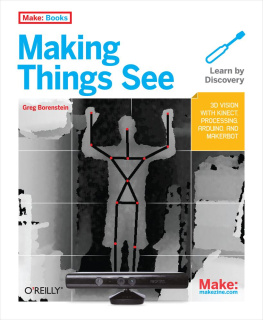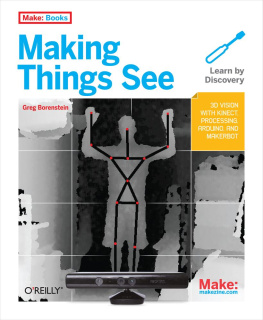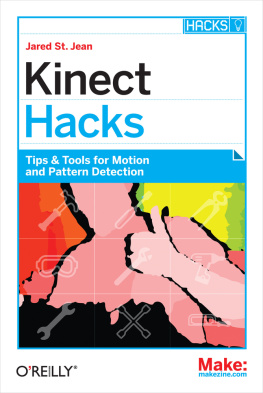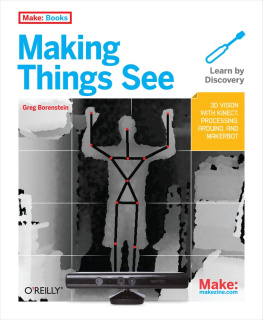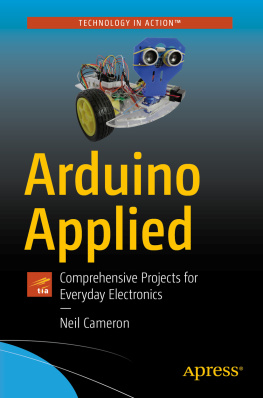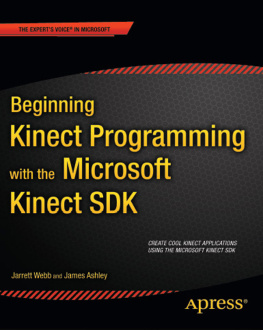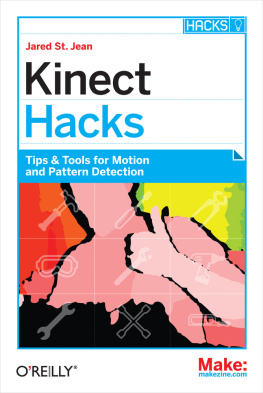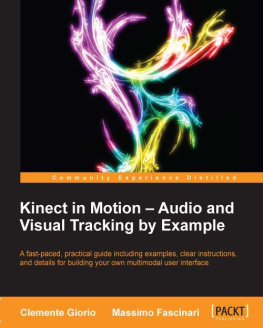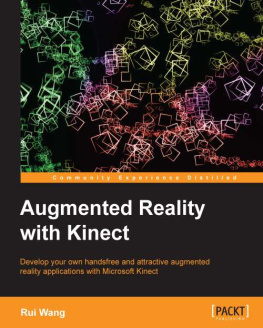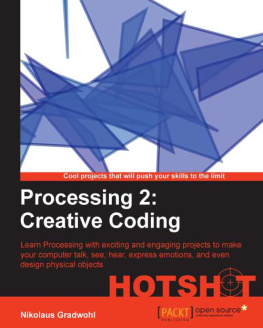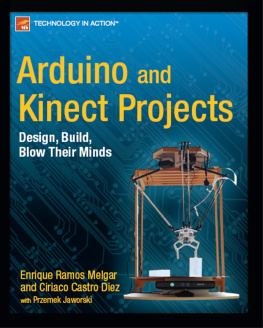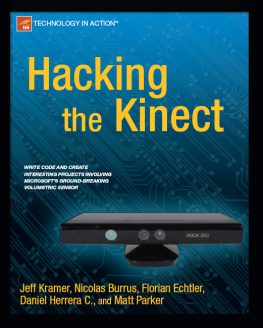Greg Borenstein - Making Things See: 3D vision with Kinect, Processing, Arduino, and MakerBot
Here you can read online Greg Borenstein - Making Things See: 3D vision with Kinect, Processing, Arduino, and MakerBot full text of the book (entire story) in english for free. Download pdf and epub, get meaning, cover and reviews about this ebook. year: 2012, publisher: Maker Media, Inc, genre: Computer. Description of the work, (preface) as well as reviews are available. Best literature library LitArk.com created for fans of good reading and offers a wide selection of genres:
Romance novel
Science fiction
Adventure
Detective
Science
History
Home and family
Prose
Art
Politics
Computer
Non-fiction
Religion
Business
Children
Humor
Choose a favorite category and find really read worthwhile books. Enjoy immersion in the world of imagination, feel the emotions of the characters or learn something new for yourself, make an fascinating discovery.
- Book:Making Things See: 3D vision with Kinect, Processing, Arduino, and MakerBot
- Author:
- Publisher:Maker Media, Inc
- Genre:
- Year:2012
- Rating:5 / 5
- Favourites:Add to favourites
- Your mark:
Making Things See: 3D vision with Kinect, Processing, Arduino, and MakerBot: summary, description and annotation
We offer to read an annotation, description, summary or preface (depends on what the author of the book "Making Things See: 3D vision with Kinect, Processing, Arduino, and MakerBot" wrote himself). If you haven't found the necessary information about the book — write in the comments, we will try to find it.
This detailed, hands-on guide provides the technical and conceptual information you need to build cool applications with Microsofts Kinect, the amazing motion-sensing device that enables computers to see. Through half a dozen meaty projects, youll learn how to create gestural interfaces for software, use motion capture for easy 3D character animation, 3D scanning for custom fabrication, and many other applications.
Perfect for hobbyists, makers, artists, and gamers, Making Things See shows you how to build every project with inexpensive off-the-shelf components, including the open source Processing programming language and the Arduino microcontroller. Youll learn basic skills that will enable you to pursue your own creative applications with Kinect.
- Create Kinect applications on Mac OS X, Windows, or Linux
- Track people with pose detection and skeletonization, and use blob tracking to detect objects
- Analyze and manipulate point clouds
- Make models for design and fabrication, using 3D scanning technology
- Use MakerBot, RepRap, or Shapeways to print 3D objects
- Delve into motion tracking for animation and games
- Build a simple robot arm that can imitate your arm movements
- Discover how skilled artists have used Kinect to build fascinating projects
Greg Borenstein: author's other books
Who wrote Making Things See: 3D vision with Kinect, Processing, Arduino, and MakerBot? Find out the surname, the name of the author of the book and a list of all author's works by series.

